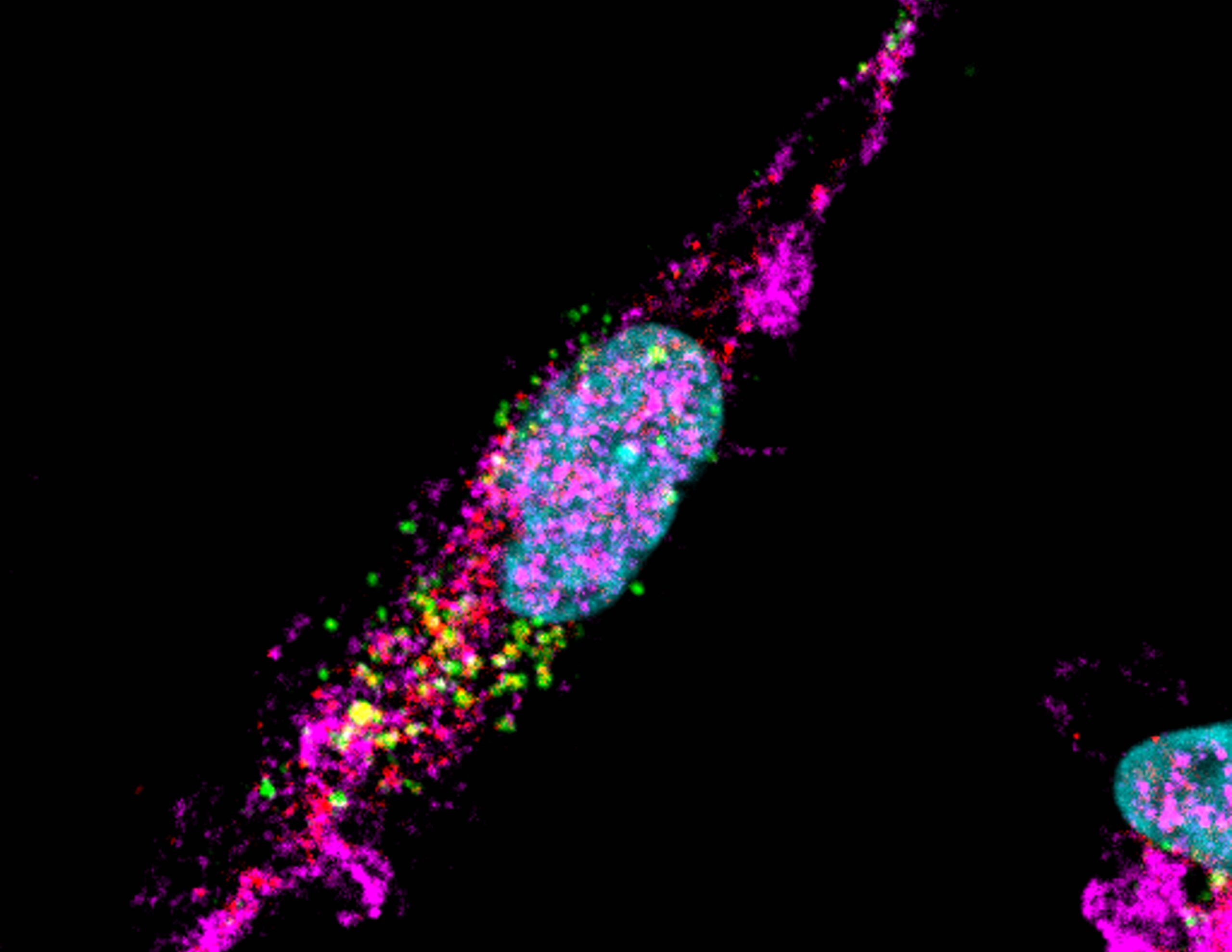Red blood cell particles reduce fat deposition in arteries, potentially treating atherosclerosis
Published: 10 Aug 2023

Red blood cell extracellular vesicles (RBCEVs) taken up and sorted to specific compartments inside a macrophage. Photo Credit: Thach Pham
Atherosclerosis is a disease in which fat, cholesterol, and other substances build up inside artery walls. This can lead to plaque formation, which can block arteries and cause heart attacks and strokes. Immune cells play a key role in cleaning the blood, by interacting with red blood cell extracellular vesicles (RBCEVs), which are nano-sized particles released by red blood cells.
Commonly referred to as “first responders” to infections, macrophages are immune cells which detect and clear pathogens and dead cells, and secrete molecules to activate other immune cells. To understand what happens to macrophages that are exposed to a high amount of RBCEVs and whether they prove to be beneficial in treating atherosclerosis, a multi-institutional team examined the mechanisms of how RBCEVs are internalised by macrophages and analysed the consequent changes.
Led by Assistant Professor Minh Le from the Department of Pharmacology and the Institute for Digital Medicine (WisDM), Yong Loo Lin School of Medicine, National University of Singapore (NUS Medicine), the study demonstrated that the uptake of RBCEVs by macrophages was highly efficient, as the particles induced multiple changes in the macrophages. Following exposure to RBCEVs, the macrophages had decreased levels of proteins that promote inflammation, suggesting the potential use of RBCEVs to alleviate conditions associated with excessive inflammation. The macrophages also produced higher levels of an enzyme which protects cells against oxidative damage—commonly observed in inflammatory and cardiovascular diseases. In addition, the RBCEVs led to higher resistance to lipid uptake in the macrophages, reducing fat deposition—which characterises the condition of atherosclerosis.

Macrophages that have taken up red blood cell extracellular vesicles (RBCEVs) develop “Mhem” characteristics that protect them against becoming fat-laden “foam cells”, which contribute to artery-clogging plaques. Credit: Trinh Tran.
Published in the Journal of Extracellular Vesicles, one of the top Cell Biology journals, the study was conducted in collaboration with the Department of Surgery, Department of Physiology, Nanomedicine Translational Research Programme, and Cardiovascular Research Institute at NUS Medicine; the School of Mechanical and Aerospace Engineering and Lee Kong Chian School of Medicine, Nanyang Technological University (NTU); and the Institute of Molecular and Cell Biology, Agency for Science, Technology and Research (A*STAR).
Asst Prof Minh Le said, “We have known for a while that RBCEVs tend to go to macrophages when they enter the body, but we did not realise some of the implications until now. The properties of RBCEVs that we have uncovered here are desirable for treating atherosclerosis and possibly other inflammatory diseases.”
Read more in the press release here.


